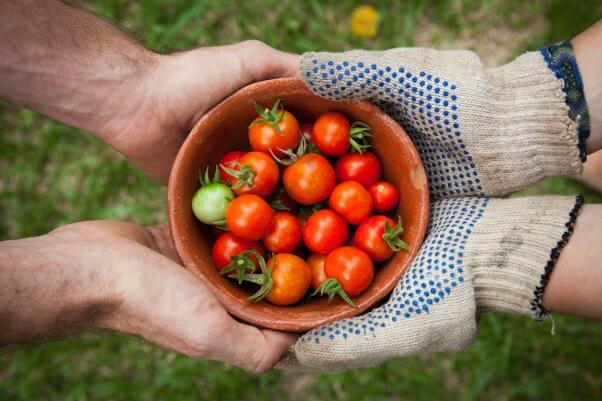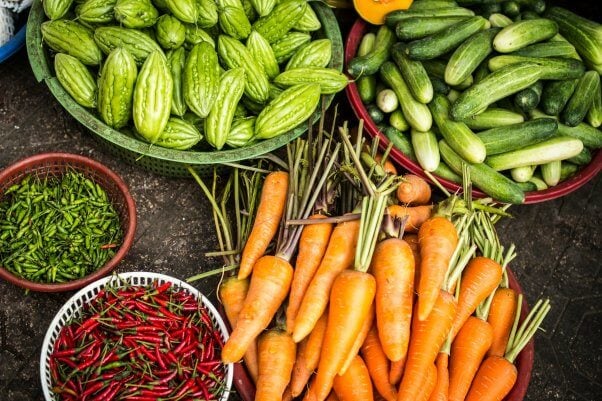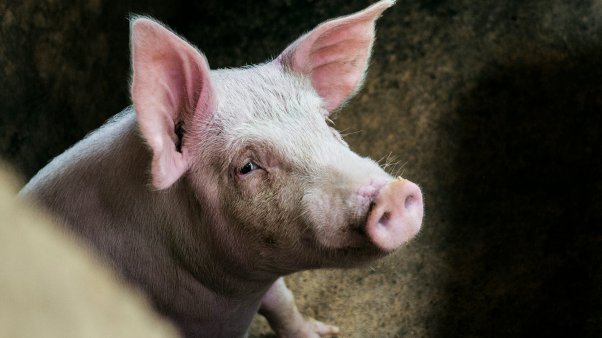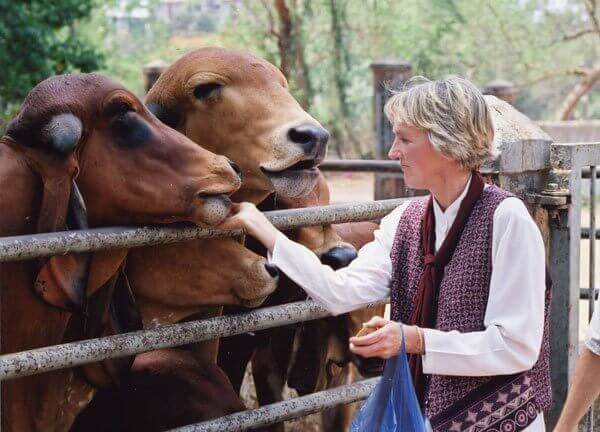Regenerative Ag Isn’t Kind to Animals—But It Could Be. Here’s How
Is regenerative agriculture “sustainable” or just another way to exploit animals? First, let’s dive into what the buzzword regenerative agriculture means.
What Is Regenerative Agriculture?
Regenerative agriculture is a method of farming aimed at restoring the health of the land. Some techniques don’t use animals, like no-till farming. This method is entirely animal-free and increases water retention in the soil, retains carbon, and fosters the growth of beneficial microorganisms.

But some techniques, like rotational grazing, use animals like cows or goats rotated across pastures. In other words, humans have found yet another way to exploit the animals they kill for profit. This method also relies on raising animals for food, which is cruel and devastating to the planet.
But don’t grazing animals fertilize the soil and help restore degraded land?
Animals in nature already do that without being bred, confined, and hacked into pieces. Rotational grazing also contributes to methane emissions and land use inefficiencies.

Vegan farming can build soil health—without exploitation. But while we wait for vegan farming to catch on, we can all do our part today by ditching anything made from an animal.
Without animal poop, how would we fertilize the soil?
Cover crops, crop rotations, and compost all regenerate the soil without turning animals into “resources.” And let’s not forget—manure only has nutrients because animals eat plants. Why cycle nutrients through animals when plants provide them directly?
Why is going vegan more sustainable?
Of all the agricultural land in the U.S., 80% is used to raise animals for food and grow grain to feed them. Nearly half of all the water used in the U.S. goes to raising animals for food. This is beyond wasteful. Beans, lentils, and vegetables are nutrient-dense, resource-efficient, and don’t require suffering.
Why is going vegan the kindest way to farm?
Pigs are as intelligent as dogs, chickens cluck to their unhatched chicks, and cows form lifelong friendships. These animals have rich emotional lives and unique personalities. Yet billions of animals suffer when they are considered mere commodities.

On today’s farms, mother pigs are trapped in crates so small they can’t turn around. Baby calves are torn from their mothers so humans can steal their milk. And chickens are bred to grow so unnaturally fast that their legs can’t carry themselves.
Growing food without using animals in any way is the kindest way to farm.
Could regenerative agriculture make flesh, dairy, and eggs more sustainable?
Raising and killing animals for food will never be sustainable. It consumes vast resources while generating greenhouse gas emissions and pollution that devastate ecosystems and drive climate catastrophe. No tweaks in the system will change that.
So, watch out for misleading labels. Industries seeking to “greenwash” animal-derived ingredients, like “carbon-neutral burgers,” have co-opted the term “regenerative.” These claims mislead well-meaning customers.
Why going vegan is the only sustainable choice.
The only real way to reduce the environmental damage of animal agriculture and protect animals from cruelty is to go vegan. Researchers at the University of Oxford found that ditching meat and dairy can reduce one’s carbon footprint by up to 73%. Plus, each vegan spares nearly 200 animals from suffering every year.
Use vegan regenerative practices in your own garden!
- Plant-Based Compost: Turn kitchen scraps into rich, animal-free compost—no manure needed.
- Cover Crops: Grow clover or beans to naturally replace soil nutrients between planting seasons.
- No-Till Gardening: Skip digging to protect soil microbes and retain moisture.
- Mulch: Use straw or wood chips to lock in water, keep weeds in check, and feed the soil.
- Animals Welcome: Plant native flowers to attract pollinators.
Help animals right now
Kind consumers can take steps to end this cruelty and the “humane” lies—first, by going vegan, and second, by making sure organizations know that you won’t support them until they end all their factory farm endorsements. Please sign PETA’s petition telling Humane World for Animals (formerly Humane Society), the ASPCA, and Compassion in World Farming to resign from the Global Animal Partnership’s board of directors immediately and end their affiliation with the partnership and all factory farming of animals.

